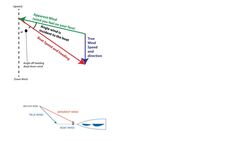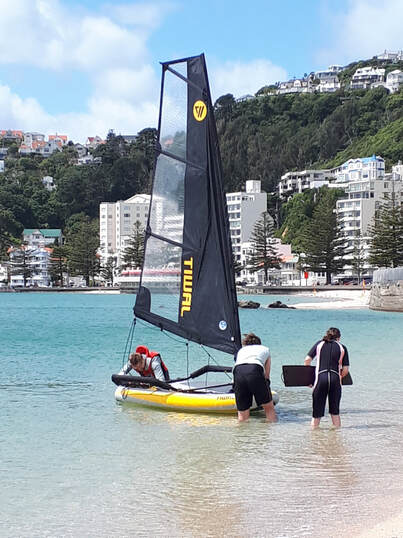 Hello TIWAL owners, I am in lockdown in Auckland, so I join the majority of you also in some sort of lockdown. I spoke too soon. So, in the spirit of feeling useful, enlightened, and part of the TIWAL community, read on. When I tried a small foiling boat for the first time I did more swimming than sailing. I thought I was a good sailor! I needed to get back to basics again - and learn more about apparent wind. Maybe it will help me with my other sailing too? Have you ever struggled to get sailing? Here is an explanation of apparent wind and why you need to know about it. Apparent wind is the wind we feel and experience when we are in motion. It's a combination of the actual wind (true wind) that blows over land and sea and the wind created by our moving forward. Think of your bike when it is moving fast. That wind you feel on your face is apparent wind. Even if there is a slight wind at your back (the true wind) you can still feel the wind coming from in front of you (the apparent wind). Now, increase that following wind and, at the same time your bike speed, you'll start feeling less of a headwind coming at you. That's because apparent wind is a combination of the true wind and the wind created by speeding forward. The important thing to realize here, however, is that as you travel faster the apparent wind not only increases in speed but it also changes the angle of the wind. Now relate that to sailing: the wind we feel on our face as we are sailing is the same wind the sail feels - we sail to the apparent wind, not to the true wind. Have you ever struggled to get moving in very light winds? Try these two things: 1. Adjust your steering to sail at a reaching angle (across the wind) to increase your boat speed. Once you have increased your boat speed you can then point higher into the wind. You will also be able to steer more easily with more water flow over your centreboard and rudder. 2. The wind hits the sail at a different angle up high, and that means you adjust your sail accordingly - ease the mainsheet to ’twist’ the sail at the top. When there is almost no wind, the layer of air close to the water is very slow. The wind higher up maybe 2 knots more. So you may have 0.5 knots at the bottom of your sail and 2.5 knots at the top of your sail. Slow wind speeds on the surface mean if you are sailing upwind, beam reaching or broad-reaching it will mean that the apparent wind will be almost directly ahead of you at your eye level, but at the top of the mast the wind will be coming more from the side so there will be a massive twist (change of direction in the apparent wind). If you want to enjoy a smooth sailing experience or an adrenaline filled ride, book a sail in a TIWAL Inflatable Sailing Dinghy and get on the water in 20 minutes.
0 Comments
Leave a Reply. |
Melinda HenshawI am a New Zealand sailor who learned to sail in the beautiful Malborough Sounds and then went onto represent NZ at the 2000 Olympics. Archives
December 2023
Categories |



 RSS Feed
RSS Feed
